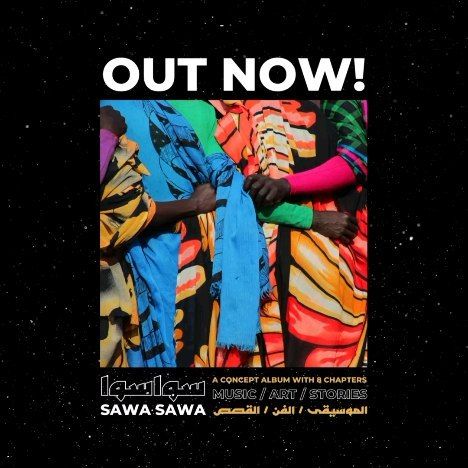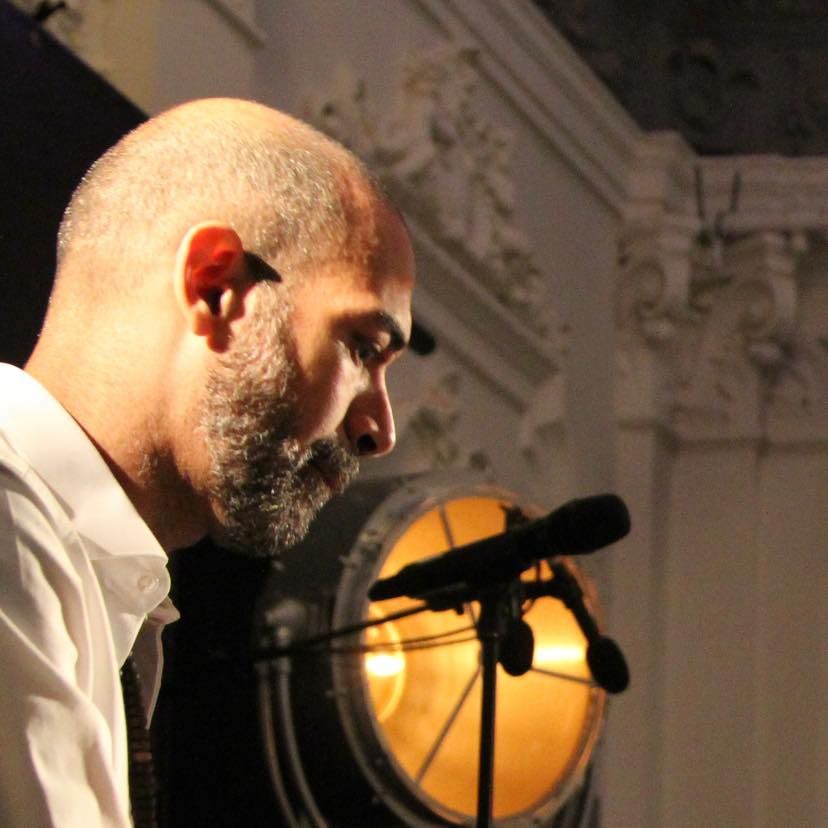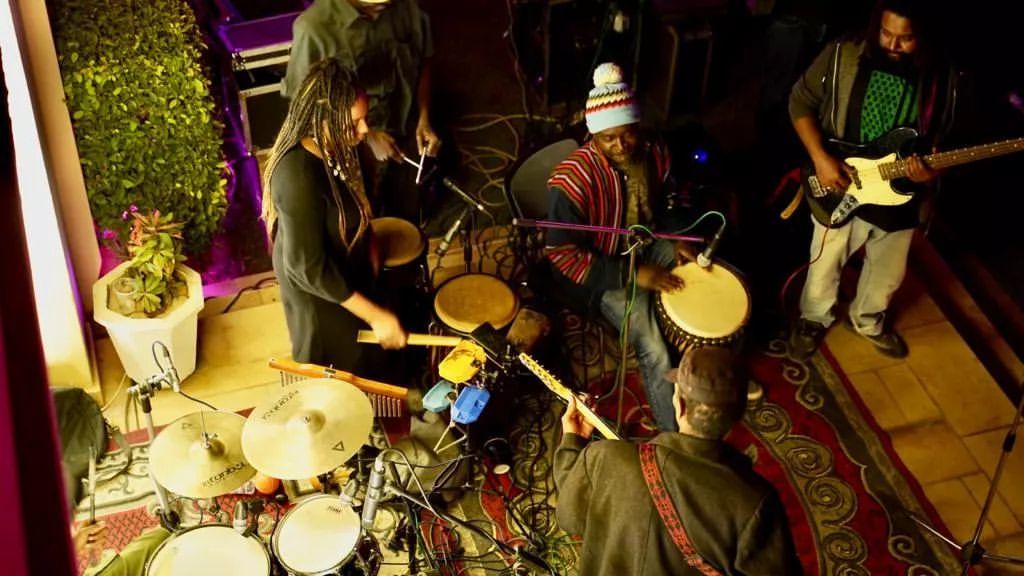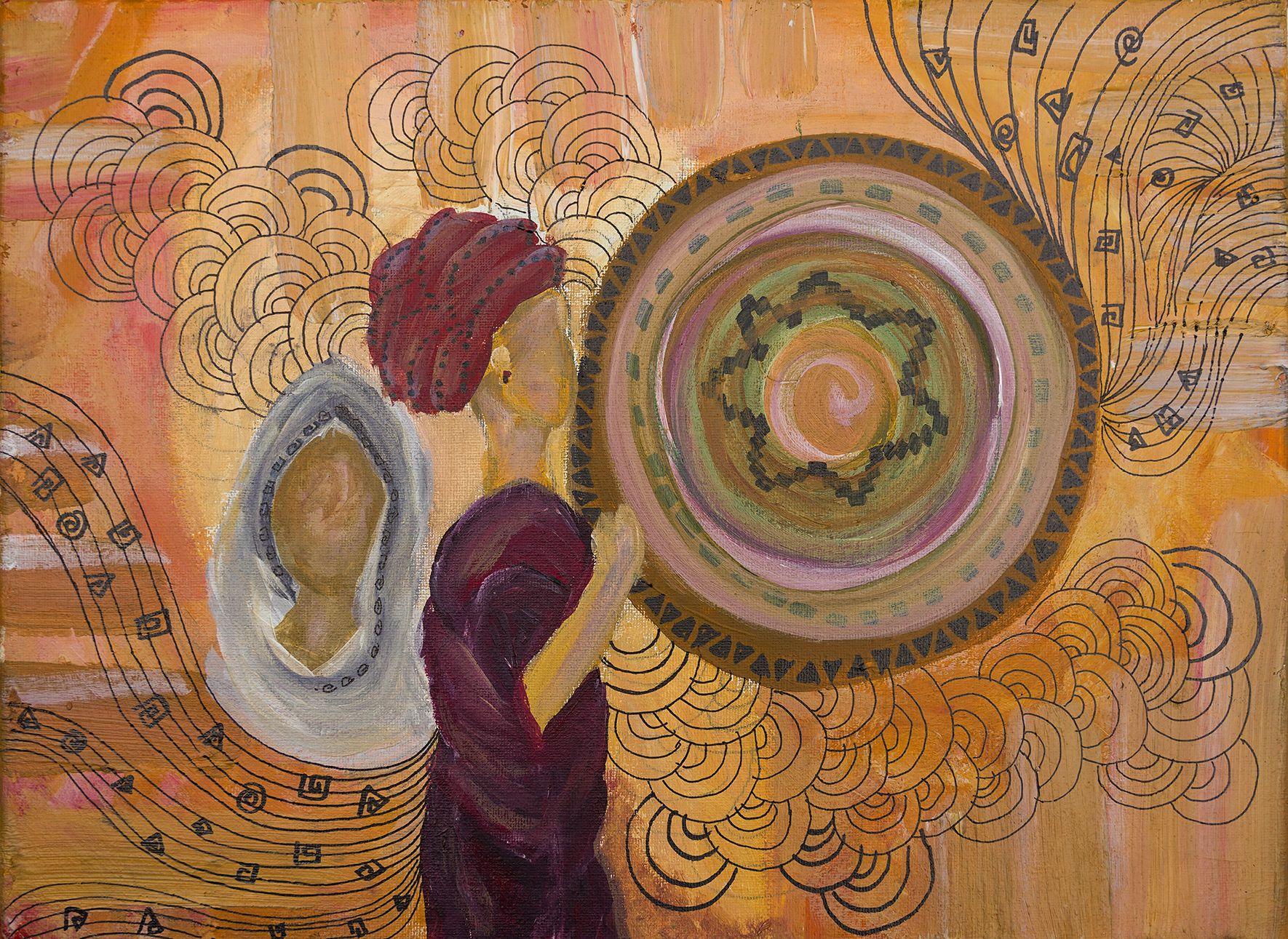
Sawa Sawa Album Cover. Source Salma Omar/ Instagram
What does a journey mean? What can a journey offer us? And how does the path between where we started and ended change us? Anaïs Nin writes in her diaries. “We travel, some of us forever, to seek other states, other lives, other souls.”. Nin, having to flee from her home in France during World War II, talks about the need to travel in soul and mind to become whole. This specific journey through dimensions real and ethereal, is what the powerfully immersive concept album Sawa Sawa evokes.
The most lasting works of art often occupy two lives. The life that was intended under the control of the creative behind it, and a life of its own that emerges from the consequence surrounding its production.
Sawa Sawa is a Musical Trip
Sawa Sawa, a hypnotic and transcendental concept album, is not only a journey thematically but also textually. Sawa Sawa means "All Together" in Sudanese Arabic and the album is an extraordinary concept of a musical trip around Africa and its rich history of sound, art, and poetry. No one involved would have expected, however, that the path to creating the album would itself lead them to traverse countries, timespans, and a sudden violent war.
Before Sawa Sawa, there was Salma Omar, Ahmed Homaida, and Drum Circle Sudan. Their shared love for the unique sounds of African rhythm led them to create the passion project Drum Circle Sudan where they first experimented with incorporating traditional Sudanese music with styles from other cultures and creating melodic bridges.

Salma Omar, Ahmed Homaida. Source: Goethe-Institut
Their interest in building links between different cultural sounds eventually grew into a desire to bring together a collection of different artists to collaborate on a diverse album. Here is where the seed for Sawa Sawa was planted and in 2018 at Jazz Café in Khartoum, they dreamt up a project of 8 tracks, 8 works of art, and 8 short stories.
The small seed grew and later that year the roots took the percussionist duo to Sinai, Egypt to start recording their first track. However, their vision would only get bigger and their circumstances only more complicated from then on.
The Making of the Album
In 2019, Abraham Moughrabi, the producer and founder of Brighton’s Jinn Records, was visiting Sudan to work with another artist when the revolution began. Fueled by passion from the various artistic projects that came out of that period, Moughrabi spent his time couped up recording revolutionary music and immersed himself in the power of the moment.
So when things calmed down and he was approached with Salma and Ahmed’s vision for a Pan African fusion concept album, he found himself quickly immersed in their vision and started involving other artists.
“I guess the beginning of ‘Sawa Sawa’ was two percussionists, Salma Omar and Ahmed Homaida. Their vision was to work with various musicians and vocalists and writers to put together this collaborative album. It started in 2018 when they did the first set of recordings in Sinai, Egypt with a Mauritanian singer and an Egyptian drummer. From there the whole story is plagued by circumstances.” Abraham Moughrabi noted during an interview.

Producer Abraham Moughrabi. Source: Facebook/ Abraham Moughrabi
Over the time of the recording, the revolution would continue, a pandemic ravaged the world, a coup would take place, several years would pass and lastly, a devastating war would separate the crew. And the journey that was meant thematically for the album was manifested in real life.
They were forced to record sporadically, getting studio time in different places, spending every moment not knowing if the next would take place. Eventually staying dedicated to their central vision of unity and peaceful coexistence, they were able to put together an album across different countries and many years.

Salma Omar with Sudan Roots Music and Chebeen Teriya performing at a mini fest at Andariya Park in 2022. Source: Salma Omar
An Insight into the Tracks
To travel is to take with you some things and to leave other things behind. In Sawa Sawa, there are journeys of hope and joy, like in the track "Salam Alaikum" where lyrics of unity are softly sung over a hypnotic beat inviting the listener to embrace togetherness.
Other journeys are meant as trips of remembrance, like the first track "Al Ghobosh", a one-beat rhythm that immediately sets the tone both musically and lyrically for a journey through cultures and history. Some journeys are those of loss and rediscovery, much like the sultry jazzy piece "Ta'amal" that asks you to lose your sense in the sonic atmosphere of a dreamy desert.
And some journeys are a reason to celebrate, especially in tracks like "Give Your Love" and "West Vybe" where a West African drum unites the rhythms of Pan-African music. In Sawa Sawa, the statement “music is the universal language” is stretched across a divided continent to bring together an array of different experiences and weave a beautiful musical journey of harmony and hope.
When asked about the art and story dimensions of the concept album, the duo stated that “rhythms are rooted in stories, and images tell a thousand words.” Indeed, their cohesive vision of the region’s resilient artistic heritage would be incomplete with the incorporation of the deep history of the visual and written arts.
In assembling the writers, Sudanese and South Sudanese artists Gaidou, Hana Habeeb, Al Hadi AlRadi, and Ade ‘Mandela’ Matur participated to blend elements of drama, fantasy, and poetic prose. Each story carries with it equal measures of loss at the travesty of war and gain in the shape of small joyous moments. From the seaside fantasy of Awhaj and the Mermaid to the gripping saga of kids and their dogs, the stories capture the magnitude of fear, grief and the coming together in times of harshness.
As for the artwork, artists Mosab Zakaria, Maab Taj, Reem Aljeally, and Amr Badr were present during the recording of the album and in real time expressed their grief, need for connection, and hope found with solidarity. The pieces, colorful and joyous, still evoke a sense of uncertainty and nervousness.

Azrag 1 by Maab Taj, Credit: Jinnrecords.org/sawa-sawa
The imagery depicted is of moments of brightness held in place as a reminder of harmony when needed most. Together with the rest of the works, the album provides an all-around transforming experience that aims to connect people during their most difficult times.
The number 8 flipped to its side becomes the symbol of infinity. When looked at closely it also represents a loop, where the point of beginning also leads to the point of end. A journey like the one on and of Sawa Sawa, is a journey many people from the countries participating in the album too often experience.
Conclusion
Cycles of violence, survival, hope, and reconnection. Loops of a journey that starts with faith, lead through path of the devastation of loss that one can only exit once they reach back for hope and faith. From Sudan, Egypt, the UK, Mauritius, Burkina Faso, and Ghana, the album is both a sonic journey through the musical history of Africa, but also a literal journey of people having to pursue their dreams elsewhere after losing their homes. Since October of last year, Salma and Ahmed fled to Egypt and then to the Emirates, wondering where their journey would take them next.
Sudan is still grappling with a war that has claimed thousands of lives but for some, Sawa Sawa" transpires as a symbol of hope and unity among Sudanese that have had a violent interruption in their lives. The album's title track, entitled "Sawa Sawa", resounds with an unwavering message of peace, rejecting war, separation, and revenge, while embracing harmony and togetherness. The lyrics urge listeners to unite as neighbors, shed violence, and embrace the shared humanity that binds us all.
You can view the concept album Sawa Sawa here and stream it here.
